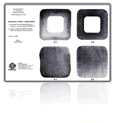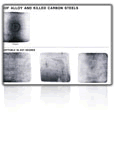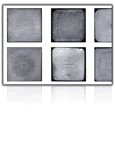Potrebujeme váš súhlas na využitie jednotlivých dát, aby sa vám okrem iného mohli ukazovať informácie týkajúce sa vašich záujmov. Súhlas udelíte kliknutím na tlačidlo „OK“.
ASTM E381-22
Standard Method of Macroetch Testing Steel Bars, Billets, Blooms, and Forgings
NORMA vydaná dňa 1.6.2022
Informácie o norme:
Označenie normy: ASTM E381-22
Dátum vydania normy: 1.6.2022
Kód tovaru: NS-1065068
Počet strán: 8
Približná hmotnosť: 24 g (0.05 libier)
Krajina: Americká technická norma
Kategória: Technické normy ASTM
Kategórie - podobné normy:
Anotácia textu normy ASTM E381-22 :
Keywords:
bars, billets, blooms, bottom-poured ingots, continuous casting, forgings, homogeneity, ingots, macroetch, macrostructure, quality control, steel, sulfur printing ,, ICS Number Code 77.140.85 (Iron and steel forgings)
K tejto norme patria tieto doplnky:
Adjunct to E381 Method of Macroetch Testing Steel Bars, Billets, Blooms, and Forgings
Vybraný formát:Zobraziť všetky technické informácie
Adjunct to E381 Method of Macroetch Testing Steel Bars, Billets, Blooms, and Forgings
Vybraný formát:Zobraziť všetky technické informácie
Adjunct to E381 Method of Macroetch Testing Steel Bars, Billets, Blooms, and Forgings
Vybraný formát:Zobraziť všetky technické informácie
Doplňujúce informácie
| Significance and Use | ||||||
|
4.1?Macroetching is used in the steel industry because it is a simple test that will provide information about the relative homogeneity of the sample. The method employs the action of an acid or other corrosive agent to develop the macrostructural characteristics of a suitably prepared specimen. The name implies that the etched surface is examined visually, or at low magnifications (usually <10?). 4.2?Macroetching will show: (1) variations in structure such as grain size, dendrites, and columnar structure; (2) variations in chemical composition such as segregation, coring, and banding; and, (3) the presence of discontinuities such as laps, seams, cracks, porosity, bursts, pipe. and flakes. 4.3?When, in accordance with the requirements of the inquiry, contract, order or specifications, forgings, billets, blooms, etc., are to be produced subject to macroetch testing and inspection, the manufacturer and the purchaser should be in agreement concerning the following: (1) the stage of manufacture at which the test shall be conducted; (2) the number and locations of the sections to be examined; (3) the necessary surface preparation prior to etching of the specimen; (4) the etching reagent, temperature, and time of etching; and, (5) the type, size, number, location, and orientation of conditions that are to be considered injurious. 4.4?When not specified, the procedures of the test may be selected by the manufacturer to satisfy the requirements of the governing specification. 4.5?When agreed upon by purchaser and producer, sulfur printing of as cast-sections, if continuously cast, is an acceptable alternative to macroetching. Sulfur printing shall be performed in accordance with Practice E1180. Examination and rating of specimens shall be in accordance with Sections 10 and 11 of this (E381) standard. 4.6?Steel from ingots, in the wrought condition, shall be examined according to procedures described in Section 9. Continuously cast steel blooms and billets, in the as cast condition, shall be examined according to the procedures described in Sections 10 and 11. With reductions over a 3:1 area ratio, wrought product from continuously cast steel may be examined according to Section 9. 4.7?The R series of photographs in Plate I shall not be used to rate Type A segregates, occasionally referred to as carbon spots and sulfur segregation. Type A segregates form in channels of the liquid-solid zone of large, solidifying ingots and appear as dark spots, including pitting due to removal of indigenous manganese sulfide microinclusions, on etched transverse sections of resultant forgings due to chemical and microinclusion content differences with the matrix. They appear as streaks in etched longitudinal sections and contain elevated levels of segregation-prone elements such as C, S, P, Si, Mn, Cr and manganese sulphide microinclusions. While Type A segregate patterns (including accompanying MnS pitting) have some similarities in appearance with the conditions in the Plate I R series photographs, they can be distinguished from the R series conditions because they are more symmetrically arrayed about the section center, and individual spots are typically more uniform in size at a given radius. The photographs in Annex I depict the presence of Type A segregates. The nature of questionable indications should be verified by microscopic examination or other means of inspection. |
||||||
| 1. Scope | ||||||
|
1.1?Macroetching, which is the etching of specimens for macrostructural examination at low magnifications, is a frequently used technique for evaluating steel products such as bars, billets, blooms, and forgings. 1.2?Included in this method is a procedure for rating steel specimens by a graded series of photographs showing the incidence of certain conditions. The method is limited in application to bars, billets, blooms, and forgings of carbon and low alloy steels. 1.3?A number of different etching reagents may be used depending upon the type of examination to be made. Steels react differently to etching reagents because of variations in chemical composition, method of manufacture, heat treatment and many other variables. Establishment of general standards for acceptance or rejection for all conditions is impractical as some conditions must be considered relative to the part in which it occurs. 1.4?The values stated in SI units are to be regarded as standard. The values given in parentheses after SI units are provided for information only and are not considered standard. 1.5?This standard does not purport to address all of the safety concerns, if any, associated with its use. It is the responsibility of the user of this standard to establish appropriate safety, health, and environmental practices and determine the applicability of regulatory limitations prior to use. 1.6?This international standard was developed in accordance with internationally recognized principles on standardization established in the Decision on Principles for the Development of International Standards, Guides and Recommendations issued by the World Trade Organization Technical Barriers to Trade (TBT) Committee. |
||||||
| 2. Referenced Documents | ||||||
|
Odporúčame:
Aktualizácia technických noriem
Chcete mať istotu, že používate len platné technické normy?
Ponúkame Vám riešenie, ktoré Vám zaistí mesačný prehľad o aktuálnosti noriem, ktoré používate.
Chcete vedieť viac informácií ? Pozrite sa na túto stránku.







 Cookies
Cookies
